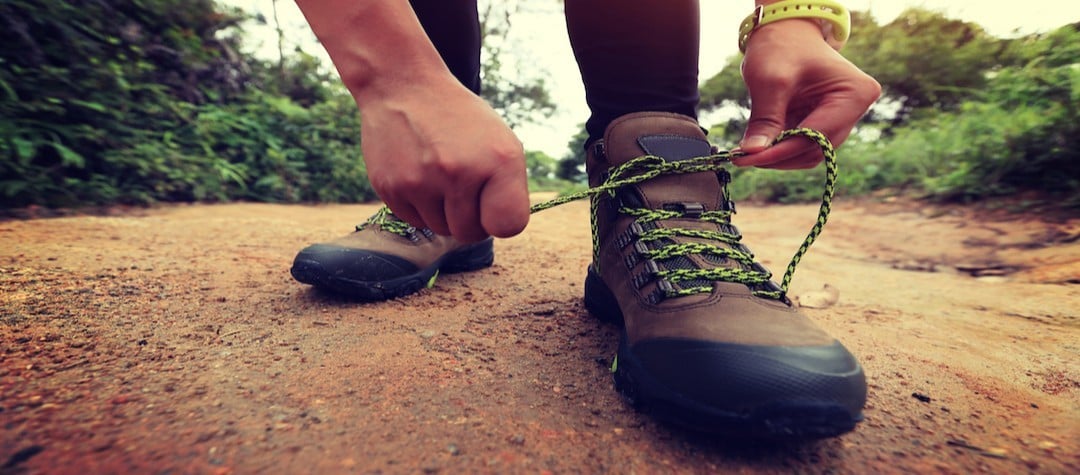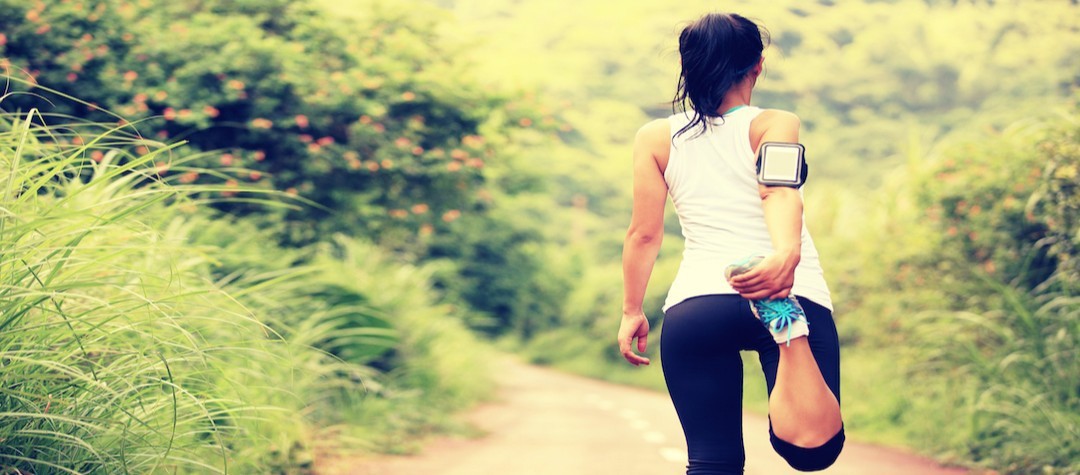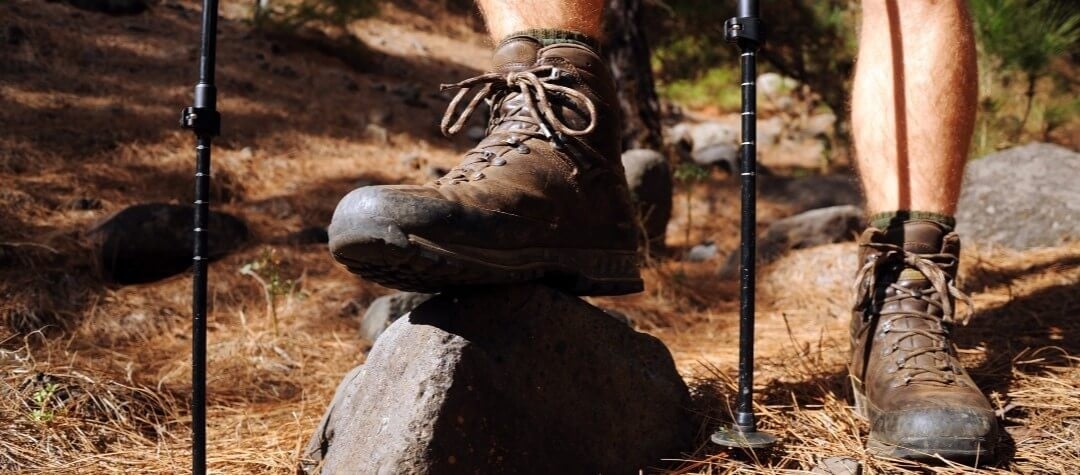Check out our simple advice on how to choose the right walking boots so you can get out there and enjoy the great outdoors in comfort.
Walking boots are key to a comfy walk – so make sure you get the right pair by following these handy realbuzz tips.
1. Go for decent price and quality
It’s not worth trying to save your cash. As a general rule the price of a pair of boots will directly reflect the quality of the footwear — so be prepared to invest in good quality, as it will be money well spent.
2. Reputable retailer
Always visit a reputable outdoor retailer with staff trained in fitting footwear. Experienced staff will be able to guide you through the bewildering range to select the design that fits you best and is most suited to your intended activities.
3. Shop in the afternoon
It’s true, the time of day that you go shopping for your new boots is vitally important to a successful retail expedition!
Our feet expand throughout the day. And the change can be quite pronounced in some individuals. So don’t go shopping for footwear first thing in the morning, when your feet will be at their smallest. You could choose footwear that feels great in the store but out on the hills it might be a different story.
4. Avoid online shopping
Don’t be tempted to buy a ‘bargain’ pair of walking boots from an online retailer - you won’t know if they will be the right fit for your individual shape of feet. And if you have to exchange you could end up with delivery costs making it a more expensive exercise than a visit to a reputable outdoor retailer with a boot-fitting service.
5. Comfort is the key
When buying your first pair of boots it is worth choosing comfort over durability. Don’t be tempted to select a tough pair of boots simply to get your money’s worth because they will last longer.
More durable boots may not offer as much comfort – giving you problems out on your walk. So go for comfort. After you have been walking for a while your feet will start to toughen up — which means you will be able to invest in tougher footwear in the future.
6. Leather or fabric?
Leather is tough, durable and breathable - allowing moisture from sweating to escape out of the boots.
However, continual advances in materials mean many boots are now made using new fabrics that also offer toughness, durability, breathability and comfort. Fabric footwear will not be as tough or durable as leather footwear but will almost certainly offer better comfort and breathability.
7. Break your boots in!
This is all about moulding your boots to your own feet – making them more comfortable and reducing the chance of blisters. Wear your new boots around your house at every opportunity in order to soften them up. This way, if you encounter any discomfort, tightness or slipping - as long as you haven’t worn them outdoors - you can return them to the store to exchange them, have them modified or get a full refund.
Once you have worn your boots around the house and are happy with the fit then continue the breaking-in process outdoors. Don’t go on a day-long walk or climb a mountain straight away though; instead, gradually increase the length of your walks to break your boots in. The more time you spend doing this, the more comfortable they will be. So don’t leave buying your footwear for that trip up Kilimanjaro until the day before your plane leaves for Africa!
8. A supporting role
Many outdoor retailers now stock ‘trekking shoes’. They may look and feel very comfortable but they do not provide the ankle support offered by boots. Trekking shoes are okay for urban travel, but if you intend to do any walking on uneven terrain, then ankle support is essential to greatly reduce the risk of an injury.
9. Summer or winter?
Many of the characteristics making a shoe ideal for summer use also make it unsuitable for the winter – and vice versa. Four-season footwear is available, but will often not offer as much comfort in summer or durability in winter as boots that are specifically designed for seasonal use. So the best thing to do is decide when you will do the majority of your walking and buy boots that correspond with the season.
If your budget allows, then ideally you should purchase one pair of boots for spring and summer use and another for autumn and winter use.
10. Don’t forget your socks
Don’t just invest time and money in your boots – make sure you do the same when it comes to choosing your socks. They can make all the difference to the comfort of your footwear! Blisters will form if you have damp or wet feet — so select a pair that actively divert sweat and moisture away from your feet to your boots.
Also, select socks with good padding in the heel and toe areas to absorb the impacts of your day’s activities. Designs that offer a seamless toe area also greatly reduce rubbing and discomfort. Never wear cotton socks when walking, though, as cotton absorbs and retains moisture, which leads to blisters — and cold feet in winter!













